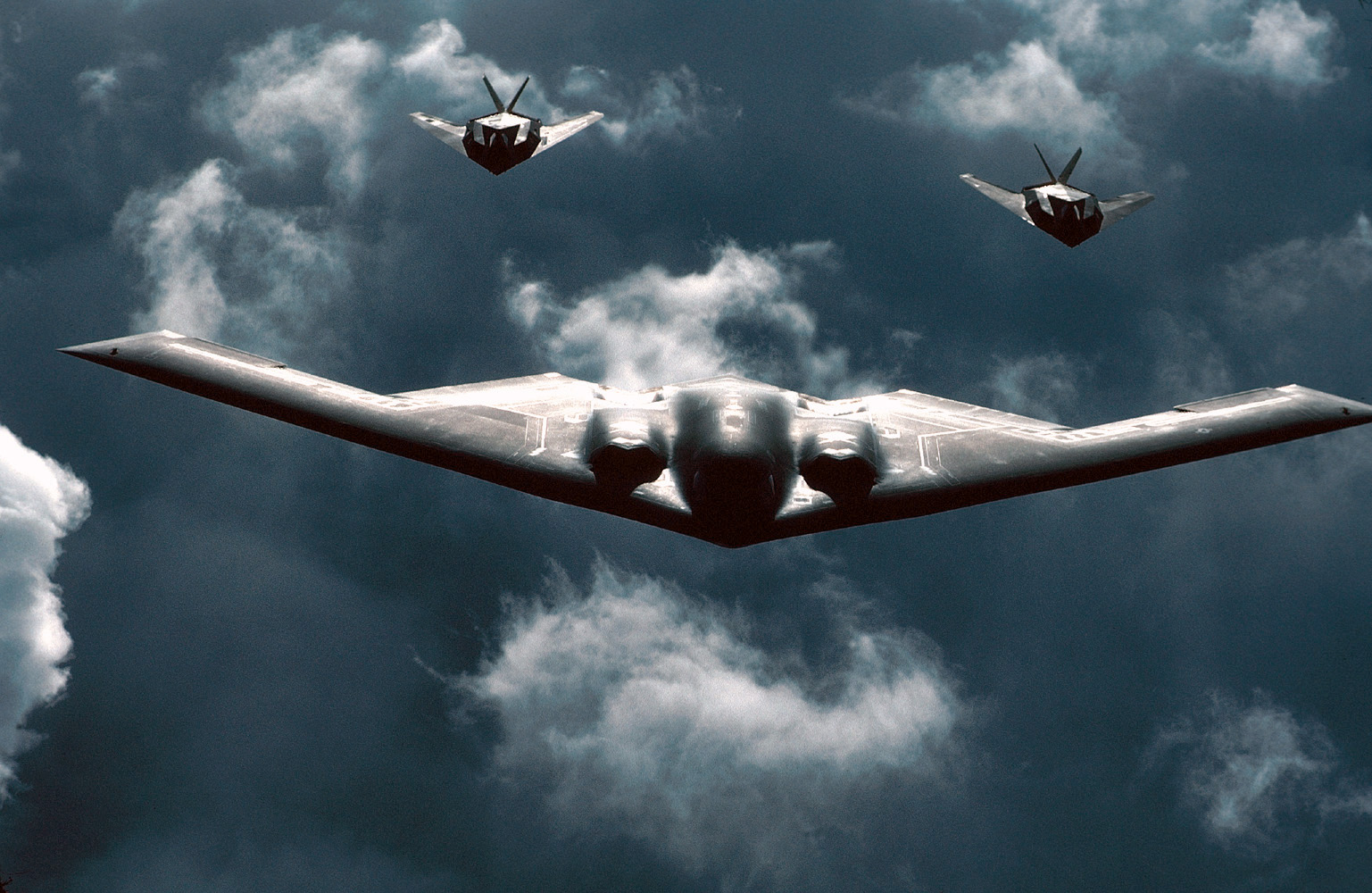...
 |
| Can you see me now? |
But stealth technology is highly asymmetric - it requires more effort and investment to develop and improve than it does to defeat. This is a common characteristic of very advanced or very complex systems - ABM (anti-ballistic missile) technology suffers from the same imbalance. As early as 1999, Yugoslavian anti air batteries were able to detect F-117s when they opened their bomb bay doors, instantly tripling their radar signature. They knew they couldn't use their radars for more than thirty seconds at a time to avoid counter-radar attacks, but even so on March 27th they fired multiple SA-3 missiles at a Stealth Fighter and brought it down. While this is the only (acknowledged) F-117 ever lost in combat, it speaks to how difficult stealth technology is to implement, and how any weakness in the stealth components can render the whole package useless.
There are lots of ways to detect a modern warplane. There's infrared, the heat generated by the engine and the friction of its passage through the air. There's all manner of radar, beams of Radio Frequency waves that bounce off and are are reflected back to a detector. There's highly sensitive elctro-optical systems - remember we have cameras in space that can read license plates. There's UV radiation, there's acoustic signals, there's just a wide range of spectrum that makes jet aircraft visible to passive systems. The technology we know as "stealth" makes an aircraft much less visible at certain wavelengths - particularly at radar and infrared frequencies. The intention is to lower the "radar cross section" of the attackers, and make them hard for air defenses to detect and attack.
Of course the problem with this concept is it assumes that the only effective approach to detecting intruding bombers is radar, or at closer ranges, infrared (heat) radiation. But if your enemies are masking those signatures, doesn't it make sense that you'd seek to exploit other, more observable signatures? There are a large number or research programs dedicated to alternative detection methods for stealth aircraft. These can be electro-optical systems, based on highly sensitive broad spectrum cameras that either detect the aircraft directly or detect it's passage through the atmosphere (Schlieren Signature). There are long wavelength radar that gives up precision to detect the entire aircraft - the wavelength is the size of the features on the airframe (1 meter) and while that sacrifices much in the way of detailed information, it still detects the inbound strike, and serves to focus more accurate systems on the attacking aircraft.
And this isn't pie-in-the-sky. Many nations, including Russia and China, have already deployed modern Infrared Search and Track (IRST) systems in their front line combat aircraft and long wavelength radars on the ground. The purpose for stealth - the penetration of contested airspace in a survivable manner - is rapidly becoming unachievable. While stealth will remain a component of the modern fighter - powerful nations spend most of their military efforts bombing backward, third world countries with 1970s era air defenses, after all - the dependency on increasing numbers of advanced missiles and stand-off weapons will increase exponentially. In many ways, the future of warfare is a process of denying your aversary access to your shores. If a nation can draw a thousand kilometer 'bubble' around its borders and actively prevent foreign operations within that bubble, then war begins to look a lot different than it ever has.
...
Maybe?
ReplyDeleteIf so, have a Sneaky New Year!
~
I think it's a good question. And I think, even though I have little knowledge on it, it does seem to me that the huge cost of providing stealth tech in a world where no other military power is able to equal it or counter it, is pointless, except for the cool factor.
ReplyDeleteOf course, in a modern Industrial-Military complex dominated country, stealth tech becomes a given, and reducing investment based on a more rational approach toward designing military tech that saves cost by reducing complexity through tossing stealth crap over the side is something that won't happen. Too many vendors in too many states.
I revise that;" in a world where most states and militaries are able to counter it"
DeleteYeah. It probably has some value in contested airspace over a modern adversary equipped with modern ant-aircraft defenses. But we don't seem to go to war with peer competitors. We much prefer fighting the Vietnams, the Grenadas, the Panamas, the Afghanistans and the Iraqs than the big boys.
ReplyDeleteOf course, we still end up losing, but that's really only because we let idiots make the decisions...
"peer competitors"
ReplyDeleteAnd who, exactly, are those anymore?
The lesson of Vietnam and Korea, as you well know, is that asymmetrical warfare is bad for the Big Boy. And yet, we pretend that beating up small countries makes us Virtuous, somehow....
"Peer Competitors", or "Near Peer Competitors" in US MilSpeak is code for Russia and China. They have the technology, the numbers and, most importantly, the nuclear forces to match whatever we could bring to bear in their part of the globe. It's funny, because they don't feel like it's necessary to spend the resources to "project power" into the western hemisphere, but if you want to "project power" into their region, you are facing bigger problems than you used to. Just google DF-21 to see how big the problems for the post-WWII US forces..
ReplyDeleteThis iss a great blog
ReplyDelete